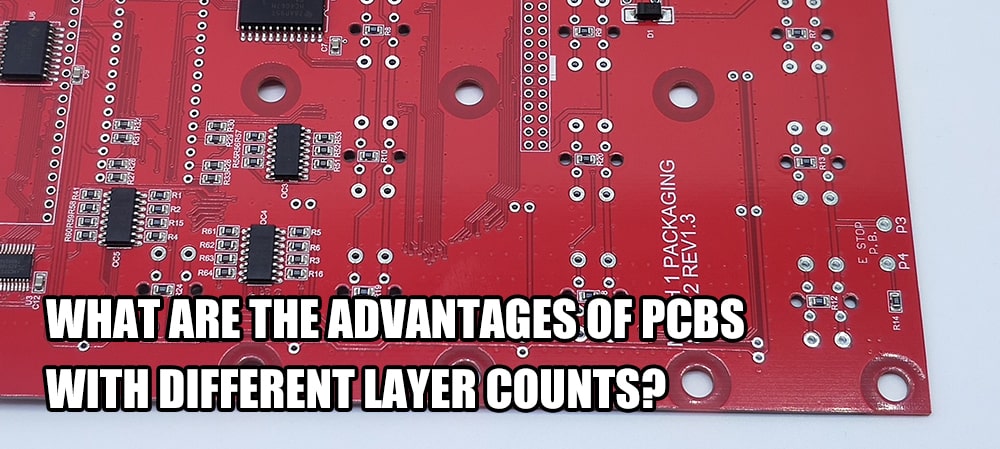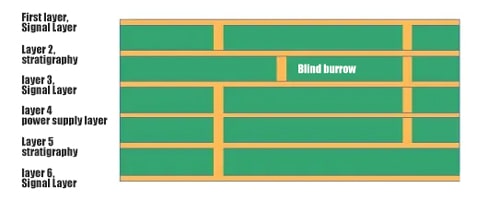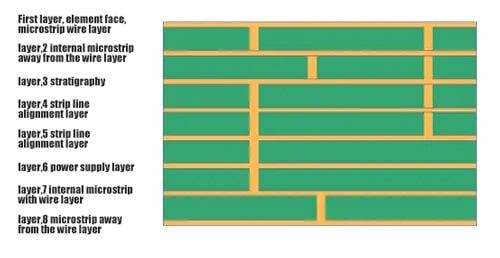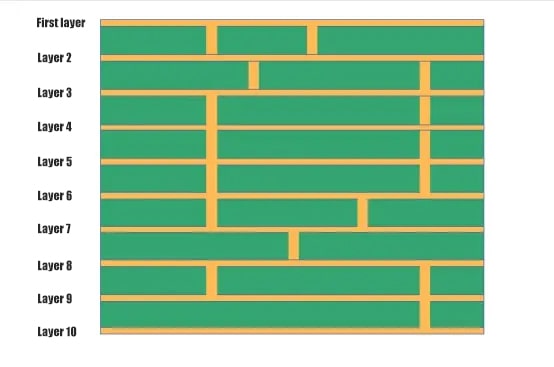What are the advantages of PCBs with different layer counts?
21 January 2025
Views: 1544
The number of layers of a PCB board refers to the number of conductive layers in the board, and PCB boards with different numbers of layers have their own characteristics in design and application. The following is a detailed introduction to the various layers of PCB boards:

Single-layer boards
Single-layer boards are the simplest type of PCB boards and are also known as single-panel boards. On a single-layer board, the wires appear on only one of the sides and are commonly used for simple circuits and low-cost applications. Single-layer boards are less expensive to manufacture, have limited wiring capabilities and circuit complexity, and are not commonly used.
Double Layer Boards
Double-layer boards are the most common type of PCB board, also known as double-sided boards. Both sides of a double-layer board allow for wire routing, which makes the circuit more versatile. By using appropriate leads and through-hole connections between the two layers, double-layer boards allow for the transmission of signals and the connection of circuits.
Quad Layer Boards
A quad-layer board consists of two double-layer PCBs with an insulating layer placed between the two layers. This design provides higher wiring density and better signal integrity. Quad-layer boards are commonly used for complex circuits and high-frequency applications because the insulating layer reduces electromagnetic interference. Therefore they are commonly used in areas such as in computer hardware, networking equipment and industrial controls.
Six-layer boards
A six-layer board consists of a four-layer PCB and single-layer boards located on the top and bottom sides. The design advantage of six-layer boards is that they can be optimized for electromagnetic interference and transmit signals at different speeds. By adding more layers, a six-layer board can provide more wiring layers and reference plane layers, thus improving signal integrity and EMC characteristics. Six-layer boards are suitable for high-speed signal transmission, communication equipment and industrial automation.
Eight-layer boards
Similar to six-layer boards, eight-layer boards consist of a six-layer board and single-layer boards located at the top and bottom. Eight-layer boards include four wiring layers and four reference plane layers that provide better signal integrity and EMC characteristics. Applications include high-performance computers with high signal requirements, communication base stations, medical equipment and aerospace.
Ten-layer boards
Ten-layer boards are mostly used in smartphones, data server boards and high-end electronic devices. These areas have complex designs with higher circuit densities and more sophisticated signaling requirements. At the same time, flexible boards can be adapted to complex shapes and curves, providing greater design flexibility, so it is mixed with the application.
In summary, the number of layers of a PCB board determines its performance in terms of wiring capability, signal integrity and EMC characteristics. PCBs with different number of layers play an important role in their respective applications and fulfill the requirements of different application needs.
Share This Story, Choose Your Platform!






















